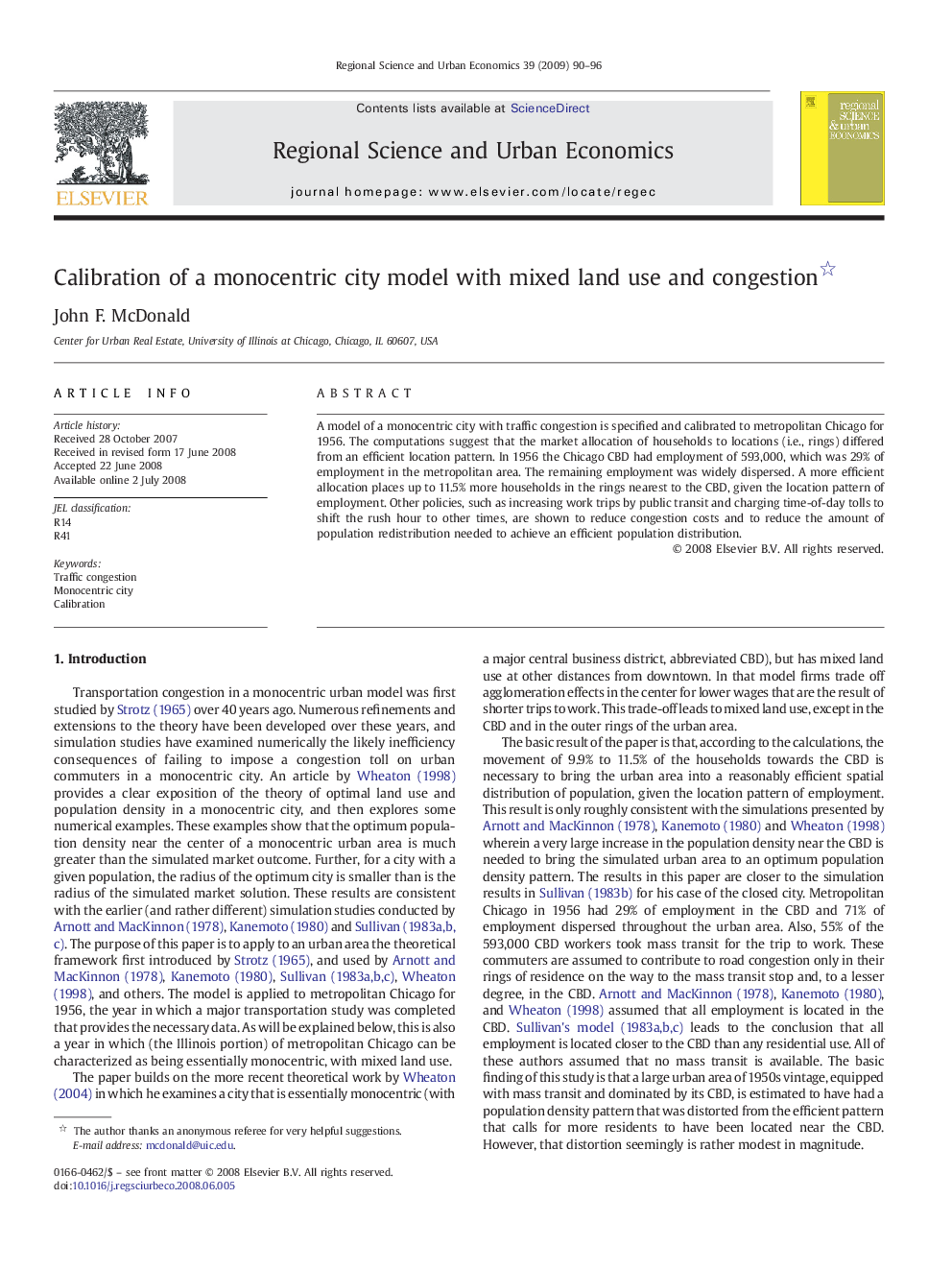| Article ID | Journal | Published Year | Pages | File Type |
|---|---|---|---|---|
| 983912 | Regional Science and Urban Economics | 2009 | 7 Pages |
A model of a monocentric city with traffic congestion is specified and calibrated to metropolitan Chicago for 1956. The computations suggest that the market allocation of households to locations (i.e., rings) differed from an efficient location pattern. In 1956 the Chicago CBD had employment of 593,000, which was 29% of employment in the metropolitan area. The remaining employment was widely dispersed. A more efficient allocation places up to 11.5% more households in the rings nearest to the CBD, given the location pattern of employment. Other policies, such as increasing work trips by public transit and charging time-of-day tolls to shift the rush hour to other times, are shown to reduce congestion costs and to reduce the amount of population redistribution needed to achieve an efficient population distribution.
